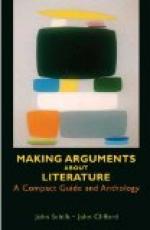Let me ask your attention, then, in the first place, to those appearances, on the morning after the murder, which have a tendency to show that it was done in pursuance of a preconcerted plan of operation. What are they? A man was found murdered in his bed. No stranger had done the deed, no one unacquainted with the house had done it. It was apparent that somebody within had opened, and that somebody without had entered. There had obviously and certainly been concert and cooperation. The inmates of the house were not alarmed when the murder was perpetrated. The assassin had entered without any riot or any violence. He had found the way prepared before him. The house had been previously opened. The window was unbarred from within, and its fastening unscrewed. There was a lock on the door of the chamber in which Mr. White slept, but the key was gone. It had been taken away and secreted. The footsteps of the murderer were visible, outdoors, tending toward the window. The plank by which he entered the window still remained. The road he pursued had thus been prepared for him. The victim was slain, and the murderer had escaped. Everything indicated that somebody within had cooperated with somebody without. Everything proclaimed that some of the inmates, or somebody having access to the house, had had a hand in the murder. On the face of the circumstances, it was apparent, therefore, that this was a premeditated, concerted murder; that there had been a conspiracy to commit it.[47]
The strength of reasoning from circumstantial evidence lies in the number and the diversity of the points of similarity to the point in hand. If there are few of them, the possibility of coincidence increases, as it also does when the points of similarity come from the same source or are of the same nature. This possibility of coincidence is a good rough test of the value of reasoning from circumstantial evidence: where the theory of a coincidence would stretch all probabilities one may safely leave it out of account.
In practice the argument from circumstantial evidence is more frequent in the experience of lawyers than in that of other men; but sooner or later everybody has to pass on such reasoning, for wherever direct evidence is out of the question it may be necessary to piece the situation together by circumstantial evidence. There is some prejudice against such evidence, springing from reported cases of miscarriage of justice in convictions based on it. Such cases, however, are very rare in reality, and probably do not equal in number the cases in which mistaken or false direct testimony has caused injustice.
46. Some Pitfalls of Reasoning—Ambiguity. I have already spoken of some of the dangers to which reasoning is subject—false analogy, faulty generalization of various kinds, and various sins against the rules of the syllogism. There are still a few general dangers to speak about. It should be noted that the various kinds of fallacies run into each other, and not infrequently a given piece of bad reasoning can be described under more than one of them.




